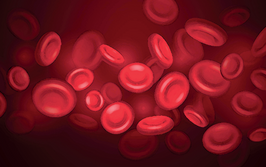A Cat and Mouse Game: The Evolving Landscape of Abuse-Deterrent Formulations
Abusers are finding ways to circumvent current abuse-deterrent measures, leaving companies in need of new strategies. Alyn McNaughton, Director of Analytical and Product Development at Encap Drug Delivery, a division of Capsugel Dosage Form Solutions, and Shonagh Walker, Formulation Scientist at Encap Drug Delivery, talk us through some of the challenges.
What are some of the main formulation strategies you use to deter abuse?
Liquid and semi-solid filled capsule products can be formulated to provide a number of physical barrier mechanisms, singly or in combination, to deter manipulation and abuse:
- It provides a liquid or semi-solid (waxy) base, which makes snorting impossible, and cannot be modified by grinding.
- The same base provides the first step in modifying the viscosity of the formulation to prevent injection by syringe.
- Adding excipients or gelling agents to the formulation can further enhance the prevention of syringing.
- The added gelling agent and base excipients also act together to inhibit liquid extraction of the API, and maintain the selected release rate even when manipulated or chewed.
- Whilst the technology is intended to provide barrier mechanisms to abuse, it is perfectly compatible with the addition of agonists or aversion systems, which are used to either reduce the clinical activity of the API or create an unpleasant effect when the product is abused.
Are abuse-deterrent formulations becoming more sophisticated?
Abuse-deterrent formulations (ADFs) in the marketplace today are in their first generation of development. The techniques used to achieve abuse deterrence for the next generation of products are becoming more targeted as the formulators develop new understanding of what is possible. Regulations governing ADFs, definitions on levels of abuse deterrence provided, and resultant market exclusivities for such forms are also developing. As these regulations develop and more ADFs reach the market, and easy-to-abuse products are withdrawn, continued innovation is required to combat the ever-improving ability of abusers to overcome abuse-deterrent properties. Most ADFs that have been developed to date have been high-dose and controlled-release formulations. Another area of significant market need and a greater challenge is the development of immediate release (IR) ADFs.
How hard is it to strike a balance between providing effective pain relief and minimizing abuse?
While preventing abuse is not a realistic goal either from a regulatory or formulation standpoint, deterring abuse certainly is. ADF guidance was recently issued by the FDA (April 2015) for opioids and this guidance sets the stage for further regulatory oversight. The balance between abuse deterrence and negative impact on the therapeutic benefits derived by legitimate patients from Schedule II drugs is a major and ongoing debate amongst pharmaceutical companies, healthcare advocates, state and local governments and the regulatory agencies.
From a formulation perspective, a balance must also be achieved. Abuse deterrence has been increasingly achieved in extended-release products, where the major mechanism of abuse was “dose dumping” through speeding up the release of a higher-dose API in a formulation intended to be released slowly. As a result, abusers have switched their attention to instant-release products, which remain less protected. Abusing instant-release dosage forms typically involves changing the route of administration, and this represents a greater challenge for abuse deterrence.
What are the next steps for the industry?
The problem is multi-faceted and the pharmaceutical industry is working with federal and state governments, the FDA and other regulatory bodies, lobbying groups, and ADF technology players to find solutions, including compromise legislation and market incentives. So far, deterrence efforts have focused on opioids but there are a number of other classes of compounds out there that are dangerously abused and could benefit from the same abuse-deterrent technologies. Continued advancements in ADF technologies and applications, including combination approaches, are required to better address the growing issue of abuse. The FDA is encouraging additional scientific and clinical research on ADF, and legislation is under consideration in the US for additional market incentives (2–5 years of market exclusivity) for ADF drugs.

As an Editor at Texere, I’m working closely with our audience to create vibrant, engaging content that reflects the hard work and passion that goes into bringing new medicines to market. I got my start in biomedical publishing as a commissioning editor for healthcare journals and have spent my career covering everything from early-stage research to clinical medicine, so I know my way around. And I can’t think of a more interesting, challenging or important area to be working in.



















